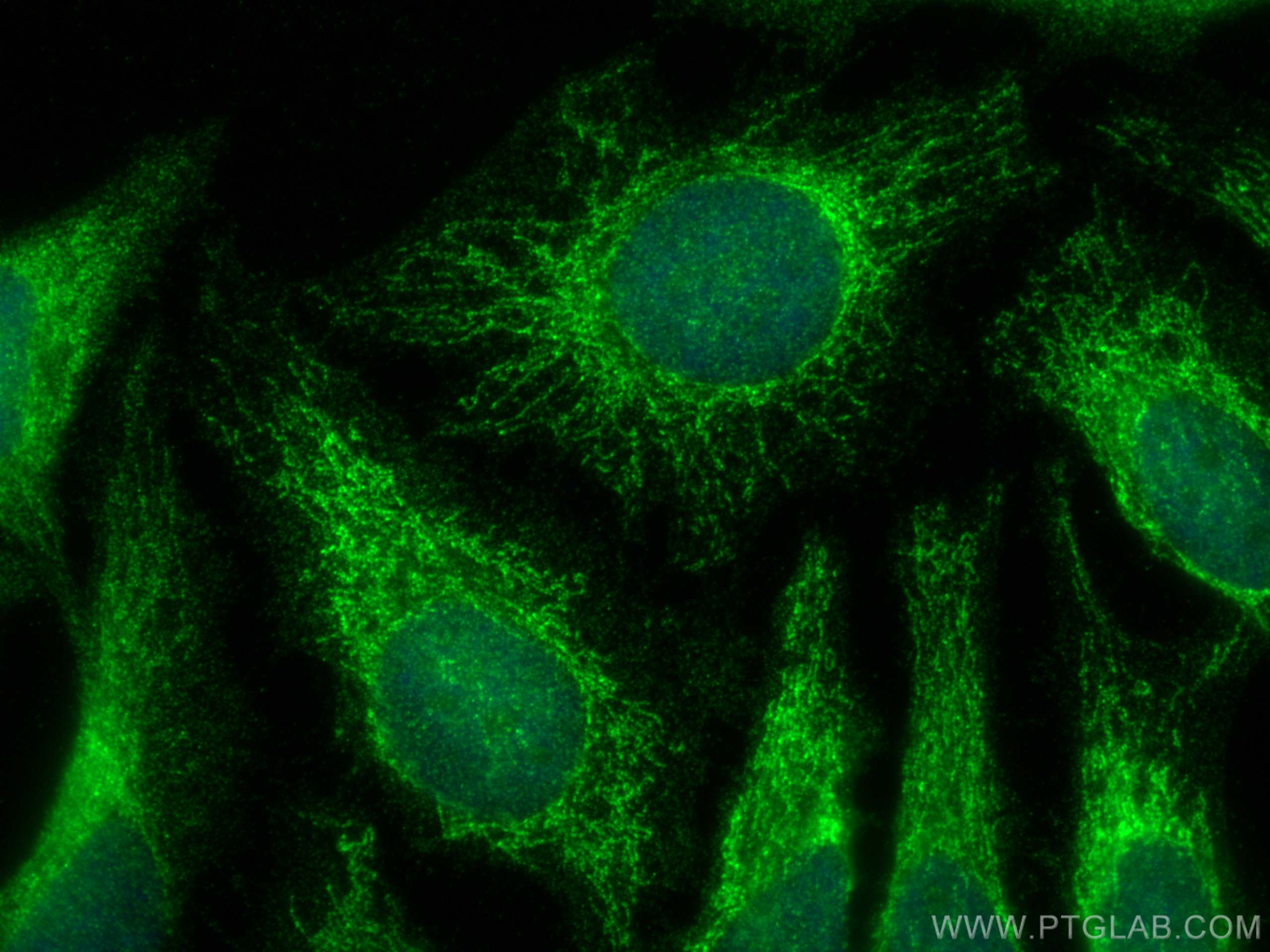Validation Data Gallery
Tested Applications
| Positive WB detected in | mouse heart tissue, 37℃ incubated mouse heart tissue |
| Positive IF/ICC detected in | HeLa cells |
Recommended dilution
| Application | Dilution |
|---|---|
| Western Blot (WB) | WB : 1:1000-1:4000 |
| Immunofluorescence (IF)/ICC | IF/ICC : 1:200-1:800 |
| It is recommended that this reagent should be titrated in each testing system to obtain optimal results. | |
| Sample-dependent, Check data in validation data gallery. | |
Product Information
15408-1-AP targets ATP5E in WB, IF/ICC, ELISA applications and shows reactivity with human, mouse samples.
| Tested Reactivity | human, mouse |
| Host / Isotype | Rabbit / IgG |
| Class | Polyclonal |
| Type | Antibody |
| Immunogen | ATP5E fusion protein Ag7672 相同性解析による交差性が予測される生物種 |
| Full Name | ATP synthase, H+ transporting, mitochondrial F1 complex, epsilon subunit |
| Calculated molecular weight | 6 kDa |
| Observed molecular weight | 6 kDa |
| GenBank accession number | BC001690 |
| Gene Symbol | ATP5E |
| Gene ID (NCBI) | 514 |
| RRID | AB_3085461 |
| Conjugate | Unconjugated |
| Form | Liquid |
| Purification Method | Antigen affinity purification |
| UNIPROT ID | P56381 |
| Storage Buffer | PBS with 0.02% sodium azide and 50% glycerol , pH 7.3 |
| Storage Conditions | Store at -20°C. Stable for one year after shipment. Aliquoting is unnecessary for -20oC storage. |
Background Information
ATP synthase epsilon subunit (ATP5E) is an important subunit of ATP synthase, which is located in the stalk region of the F1 sector. F1-ATPase is the catalytic portion of mitochondrial ATP synthase, which produces ATP from ADP and inorganic phosphate (Pi). ATP5E is widely expressed in tissues. The calculated molecular weight of ATP5E is 6 kDa (PMID: 36625260).
Protocols
| Product Specific Protocols | |
|---|---|
| WB protocol for ATP5E antibody 15408-1-AP | Download protocol |
| IF protocol for ATP5E antibody 15408-1-AP | Download protocol |
| Standard Protocols | |
|---|---|
| Click here to view our Standard Protocols |


